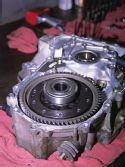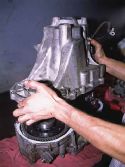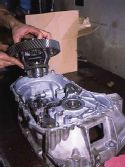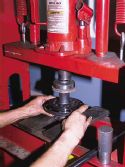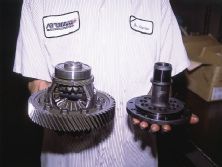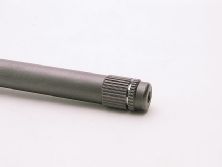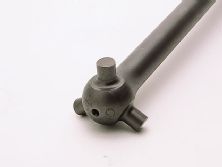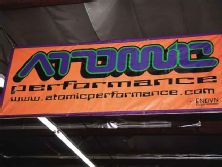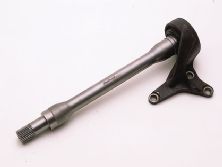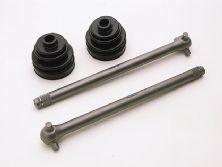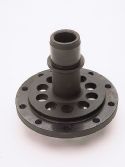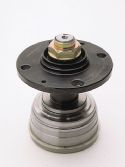Extracting huge amounts of power from four-cylinder Honda engines has become somewhat routine for many hardcore Honda enthusiasts. The likes of Papadakis, Lookofsky, Kubo, Callos and Tran have survived the trials and tribulations of record-setting import performance and established the benchmark when it comes to squeezing big power out of small powerplants. These days top-flight front-drive drag racers are pumping out over 600-horsepower and in some cases blasting down the quarter-mile in just eight seconds. Of course, horsepower is most certainly the key ingredient for quick quarters, but when you consider that many of these racers are actually turning trap speeds similar to that of a seven-second rear-drive, it seems something's not quite right. The problem--traction. Physics dictate that due to weight transfer, a front-drive drag car cannot 60-foot anything like a rear-drive where torque presses the drive wheels to the track. So in the endless quest for more traction and quicker e.t.s racers have pushed the limits way beyond factory driveline components. Many racers have stepped up in tire size for more traction but the theory has always been short-lived as the over-taxed factory driveline pieces disintegrate as soon as the hammer is dropped. Unfortunately the driveline is one area in which the vast aftermarket has failed to address completely and hone in on a final solution. Although records are still being broken, the ratio of broken records to broken drivelines is quite high.
Pro Drive Products in Paramount, Calif., has spent the last two years researching factory components and has created a dependable alternative. We recently paid a visit to Atomic Performance, home of one of the grandfathers of Honda performance-the infamous Dr. Charles Madrid. He has built a solid reputation based on his knowledge of Hondas and in particular, his expertise with the drivetrain. The Honda guru gave us the rundown on the new line of components from Pro Drive for use in Honda drag cars prior to the installation.
At the heart of the company's answer is the drag race spool, which replaces the factory differential with what is effectively a solid axle shaft between both wheels. The factory diff has been a problem for some time, as it simply cannot absorb the sudden load transferred once the clutch releases the dogs. The Pro Drive piece provides superior strength, while distributing an equal amount of power between both tires. The spool was designed using CAD/CAM technology and is CNC machined out of heat-treated alloy steel. Each piece is broached for a 27-spline Honda axle and finished in black oxide to prevent rusting. The spool weighs in at approximately five pounds, offering 35-percent less rotating mass than that of the factory differential.
As many of you are probably all too aware of, OE axle shafts are undoubtedly the weakest link in the Honda drivetrain. Pro Drive has counter-punched the problem with its own one-piece billet version that offers superior strength in areas where factory-issue pieces are so vulnerable. The company's alternative is made from a high-strength, high nickle content alloy that is proprietary to Pro Drive. This material is used for both the axle shafts and intermediate shafts and is heat-treated and shot-peened for stress relief. The shafts are of one-piece billet construction thus eliminating the OE inner bearing tripod where breakage is so common. Also, the Pro Drive units feature just one diameter in construction throughout unlike the factory versions where the overall diameter changes at various points, seemingly causing further vulnerability. The outer spline on the axle is the same size as that found in the Honda Accord, which is slightly larger than the one offered in the Integra.
To complete the package Pro Drive offers a "hybrid" outer wheel hub. These hubs are also constructed from a high-grade alloy and dubbed "hybrid" because they incorporate a custom broach to accept the larger Accord-type axle spline yet features the 4x100 wheel bolt pattern of the Civic.
The big question is does it really work? Is there finally a solution? We're a firm believer that there is no better place to find the answers than at the track, and at the time this goes to print, Pro Drive has tried and tested these components under the best possible conditions. The company's bigger, buffer-than-stock drivetrain can be found holding things together in race cars such the Lisa Kubo Racing Civic and the Jotech Motorsports Civic. Both cars pump out well over 600-horsepower and are the top two Quick Class cars in the country, consistently running low-nine-second e.t.s.

